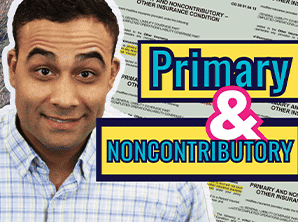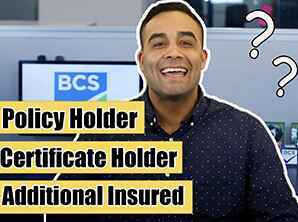Transcript
Imagine that you own a commercial property and all of a sudden that building gets damaged during a fire. You are not sure if you have the right insurance policy to protect all of the equipment, computers, supplies, inventory, or even the office space itself. Which coverage would help in this scenario, Property Coverage or Liability Insurance?
If your answer is Property Coverage you are absolutely right!
Today we are going to explain the difference between Liability Insurance and Evidence of Property Coverage.
Do you know what “liability” means? According to the dictionary “Liability” is the state of being responsible for something, especially by law. When you are held liable for causing someone a loss, you are responsible for making up the loss. So, when it comes to insurance, liability policies help you pay for charges you are legally responsible for. Some examples can include personal injury, property damage, and professional mistakes. For more information about liability policies please check our other videos linked below.
Commercial Property Insurance protects your assets against damages caused by fire, theft and some extreme weather and natural disasters. The policy can also cover loss of income or increase in expenses that results from the property damage.
Property is a big investment for all businesses of all types. The type of properties we are referring to are as follows:
Buildings – which are considered real properties
Equipment – which it can vary its significantly by industry and it can be either real or personal property. Such as movable property and not building or land.
Technology – including hardware and software. Typically considered personal property.
Office furnishings – typically considered personal property.
The standard form used to detail the evidence of property insurance is the Accord 28 and 27 forms.
We don’t call this a certificate of property coverage, it is an EVIDENCE of property coverage. This is due to the fact that an “evidence” is provided to someone with a direct interest in the property being insured, such as a mortgagee.
One of the most important concepts is causes of loss. As the term suggests, there are many scenarios where a property can be damaged. And different coverages will vary whether or not they will protect the client based on what happen to the property.
Causes of loss forms are types of evidence that defines the causes for which coverage is provided. There are 3 main forms:
- Basic Causes ( CP 10 10) – As the name suggest, Basic Cause will cover the least amount of causes. It will provide coverage for fire, lightening, explosion, smoke, windstorm, hail, riot, civil commotion, aircraft, vehicles, vandalism, sprinkler leakage, sinkhole collapse, and volcanic action
- Broad Causes ( CP 10 20)- )Broad Cause covers everything Basic covers, plus a few more. Some of these additional causes it covers are pretty devastating to a building for example, weight of snow, ice, or sleet; water damage (in the form of leakage from appliances); and collapse from specified causes.
- Special causes ( CP 10 30) – will cover EVERYTHING, unless specifically excluded. If there are exclusions, they’ll mostly be in relation to “Ordinance or Law”, Earthquake, Flood and other causes.
Even the Special Causes of Loss Form has its Limitations. In some instances, these limitations can be addressed by coverage endorsements.
Thanks for watching.
Become an insurance pro one lesson at a time!
Sign up for our free BCS Basics email course to get weekly lessons sent right to your inbox.



